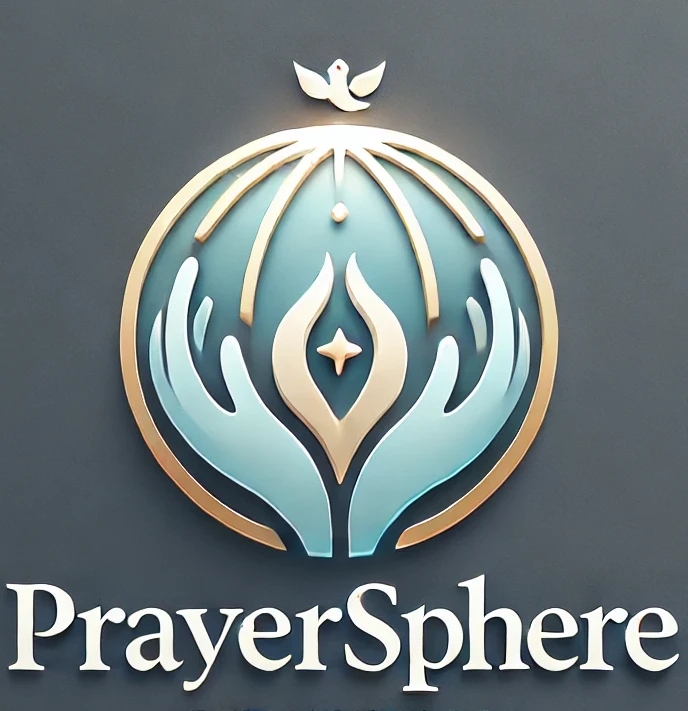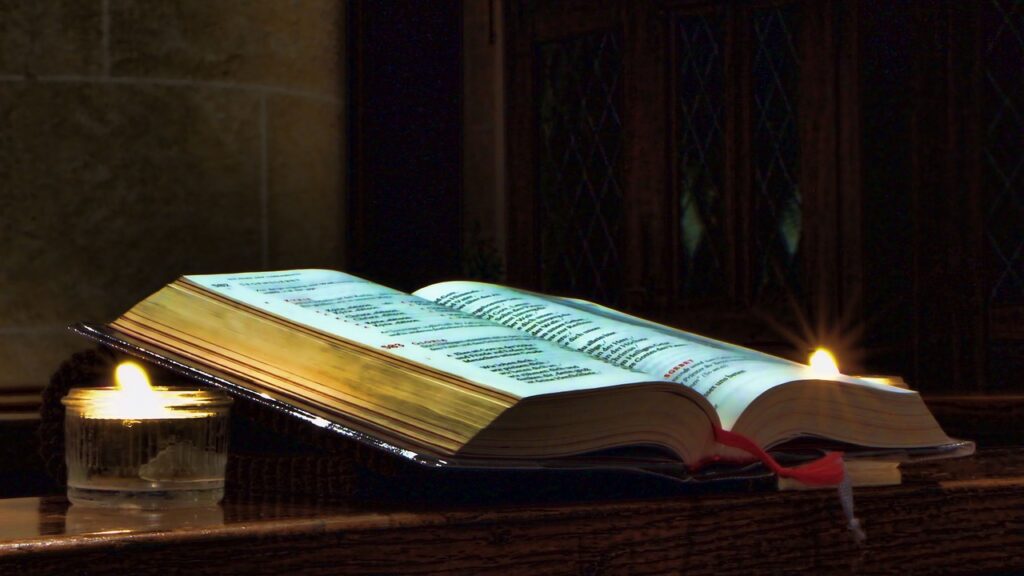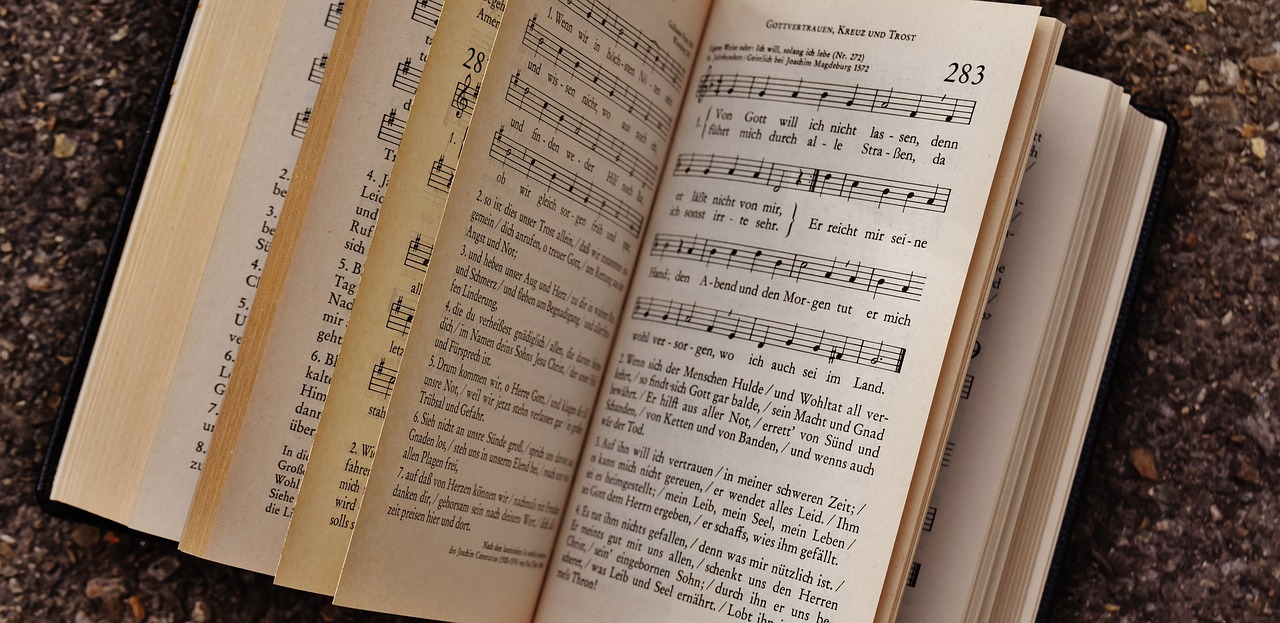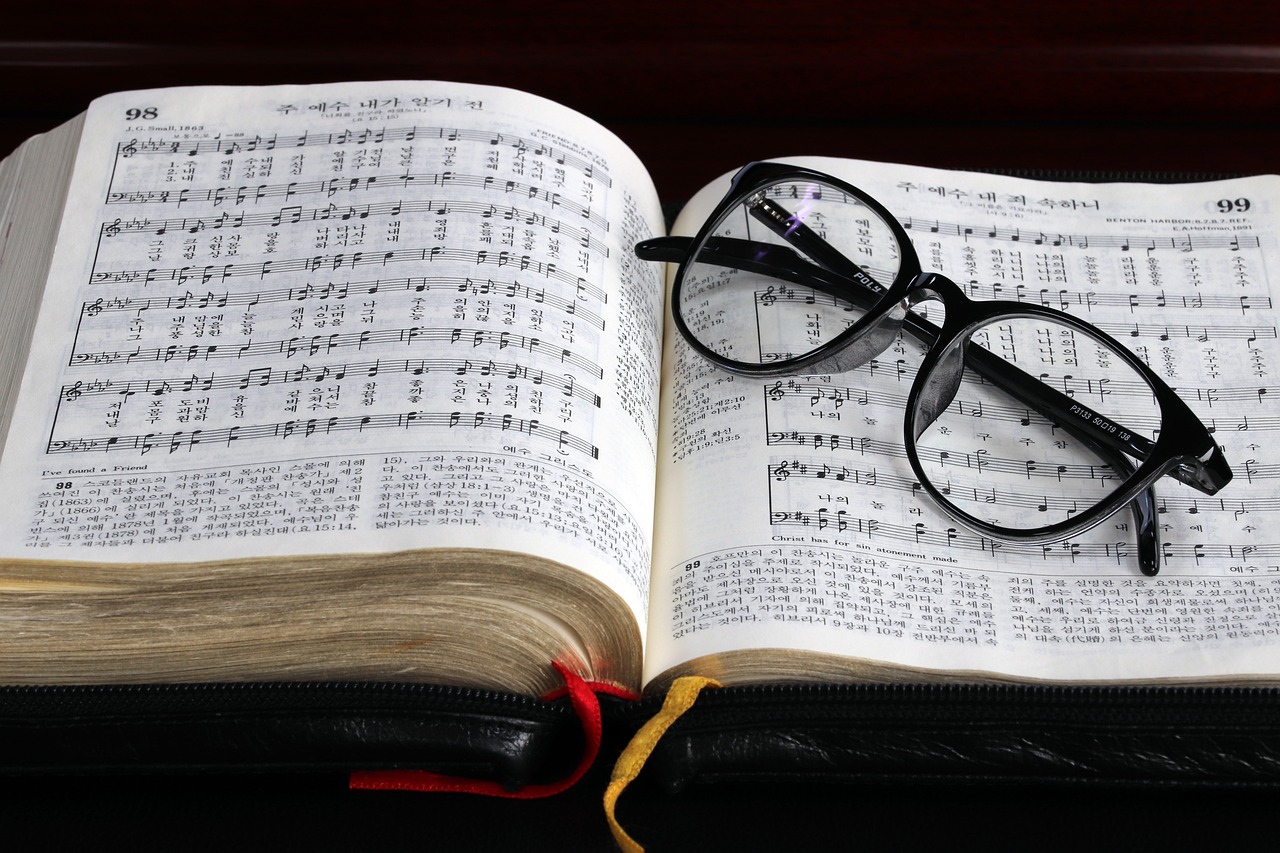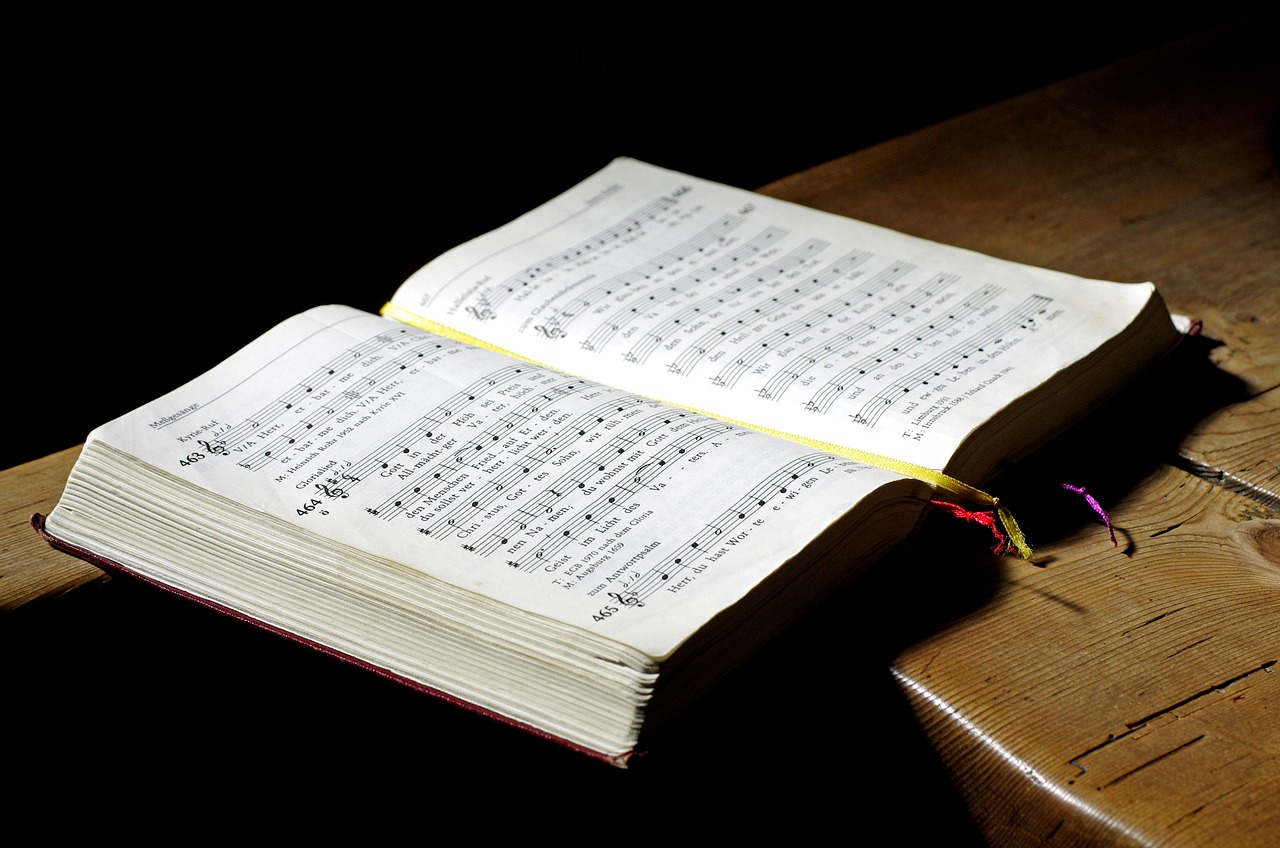Title: Blessed Assurance
Written by Fanny J. Crosby in 1873
music by Phoebe P. Knapp
1 Blessed assurance, Jesus is mine!
Oh, what a foretaste of glory divine!
Heir of salvation, purchase of God,
born of his Spirit, washed in his blood.
Refrain:
This is my story, this is my song,
praising my Savior all the day long.
This is my story, this is my song,
praising my Savior all the day long.
2 Perfect communion, perfect delight,
visions of rapture now burst on my sight.
Angels descending bring from above
echoes of mercy, whispers of love. [Refrain]
3 Perfect submission, all is at rest.
I in my Savior am happy and bless’d,
watching and waiting, looking above,
filled with his goodness, lost in his love.
Blessed Assurance – A Hymn of Faith and Celebration
“Blessed Assurance” is one of the most cherished hymns in Christian worship. Written by Fanny J. Crosby in 1873, with music by Phoebe P. Knapp, it reflects a profound sense of joy, peace, and fulfillment. The hymn has been a source of comfort and inspiration to countless individuals, becoming a timeless expression of faith and gratitude. Below is an in-depth exploration of its history, creation, and cultural impact.
Background and Creation
“Blessed Assurance” emerged during the golden age of hymn writing in the 19th century, a time when many gospel hymns were composed to enrich church worship and personal devotion. The hymn was a collaboration between two remarkable women:
Fanny J. Crosby (1820–1915): Known as the “Queen of Gospel Songwriters,” Crosby was one of the most prolific hymn writers in history, composing over 8,000 hymns despite being blind since infancy. Her poetic talent and deep spirituality allowed her to craft lyrics that resonated deeply with worshippers.
Phoebe P. Knapp (1839–1908): A gifted composer and musician, Knapp was a prominent figure in New York society and a friend of Crosby. She contributed significantly to gospel music, composing melodies for many hymns, including “Blessed Assurance.”
The story goes that Knapp invited Crosby to her home and played a new melody she had composed on the piano. She asked Crosby, “What does this tune say to you?” Crosby immediately responded, “Blessed assurance, Jesus is mine!” The lyrics flowed naturally, inspired by the melody’s uplifting and joyful character.
Publication and Popularity
“Blessed Assurance” was first published in 1873 in Sacred Songs and Solos, a hymnal compiled by Ira D. Sankey, a prominent evangelist and musician of the era. The hymn quickly gained popularity in church services, revival meetings, and Sunday schools. Its singable melody and uplifting message made it accessible to worshippers of all ages.
The hymn became a staple in evangelical worship and was included in numerous hymnals across denominations. Its enduring appeal lies in its ability to evoke a sense of joy and peace, resonating with individuals across cultural and geographical boundaries.
Musical Features
The melody composed by Phoebe Knapp is characterized by its simplicity and warmth, making it easy for congregations to sing. The structure includes:
- A verse-chorus format, allowing repetition of the central theme (“This is my story, this is my song”).
- A major key, contributing to the hymn’s uplifting and celebratory tone.
- A lilting rhythm, which mirrors the confident and joyful nature of the lyrics.
Knapp’s composition provides the perfect complement to Crosby’s words, creating a harmonious blend of music and message that has stood the test of time.
Cultural and Historical Impact
“Blessed Assurance” has been sung in countless settings, from small rural churches to grand cathedrals. It has been recorded by numerous artists, both traditional and contemporary, further extending its reach.
The hymn holds a special place in African American gospel traditions, where it has been embraced as a song of resilience, hope, and celebration. It has also been featured in popular culture, including movies, television programs, and public events, highlighting its universal appeal.
Fanny J. Crosby’s Legacy
The creation of “Blessed Assurance” is a testament to Fanny J. Crosby’s extraordinary ability to craft lyrics that touch the heart. Despite her blindness, Crosby’s hymns are filled with vivid imagery and a sense of spiritual insight. She often spoke of her blindness as a blessing, allowing her to focus on her faith and creativity.
Her collaboration with Phoebe Knapp exemplifies the power of friendship and shared purpose in producing enduring works of art. Together, they created a hymn that continues to inspire and uplift.
Reception and Timelessness
“Blessed Assurance” remains one of the most beloved hymns in the world. Its universal themes of joy, peace, and gratitude resonate with people of all backgrounds. The hymn’s simple yet profound message ensures its place in both traditional and contemporary worship settings.
The hymn’s repeated refrain, “This is my story, this is my song, praising my Savior all the day long,” invites worshippers to make the hymn their own, affirming their personal experiences of faith and celebration.
The Meaning of “Blessed Assurance”
“Blessed Assurance,” written by Fanny J. Crosby and composed by Phoebe P. Knapp in 1873, is a jubilant hymn that expresses a deep sense of confidence and peace in the assurance of salvation and the unwavering presence of Jesus Christ. The hymn’s lyrics reflect themes of personal joy, spiritual security, and the believer’s relationship with Christ.
Here’s a breakdown of its meaning:
1. Assurance of Salvation
The opening lines, “Blessed assurance, Jesus is mine! / Oh, what a foretaste of glory divine!” convey the central theme of the hymn: the believer’s assurance of salvation through Jesus Christ. The phrase “Jesus is mine” expresses a personal relationship with Christ, indicating that salvation is not just an abstract concept but a tangible reality for the believer. The line “Oh, what a foretaste of glory divine!” suggests that the joy and peace experienced in the believer’s current life are a glimpse of the eternal joy that awaits in heaven.
2. Confidence in God’s Promises
The line “Heir of salvation, purchase of God, / Born of His Spirit, washed in His blood” reinforces the believer’s confidence in God’s promises. The concept of being an “heir of salvation” emphasizes that salvation is a gift freely given by God, not something that can be earned. It speaks to the believer’s secure position in God’s family, made possible through the sacrifice of Jesus and the work of the Holy Spirit. The reference to being “washed in His blood” evokes the cleansing power of Christ’s atonement, assuring the believer of their forgiveness.
3. Spiritual Joy and Delight
The second verse, “Perfect submission, perfect delight, / Visions of rapture now burst on my sight,” emphasizes the deep joy that comes from submitting to God’s will and experiencing His grace. The “perfect submission” suggests a complete surrender to God’s plan, while “perfect delight” reflects the contentment that comes from trusting in Him. The “visions of rapture” convey the ecstatic joy the believer experiences when they feel the presence of God.
4. Praise and Worship
The refrain, “This is my story, this is my song, / Praising my Savior all the day long,” captures the believer’s desire to continually praise God for His goodness. The idea of having a personal “story” and “song” reflects the believer’s personal journey of faith and the joy of sharing their testimony. The hymn encourages the believer to make their life a continuous act of worship, offering praise to God throughout the day.
5. Spiritual Security
The hymn overall conveys a sense of spiritual security—no matter what trials or challenges the believer may face, they can rest in the assurance of God’s love and salvation. The use of the word “blessed” emphasizes the contentment and peace that comes from knowing Christ.
Conclusion
“Blessed Assurance” is a hymn of joy, confidence, and security in God’s promises. It speaks to the deep peace that comes from knowing Jesus Christ personally and the assurance of salvation through Him. The hymn reflects a life of worship, gratitude, and trust in God’s unchanging grace, encouraging believers to continually praise and celebrate the Savior who has redeemed them.
